Key takeaways:
- Feedback is a vital tool for student growth, transforming criticism into opportunities for improvement and collaboration.
- Formative, peer, and self-reflection are critical types of feedback that enhance learning and understanding.
- Effective strategies for receiving feedback include maintaining an open mind, asking clarifying questions, and prioritizing timely feedback.
- Implementing feedback through action plans and peer collaboration fosters personal growth and accountability.
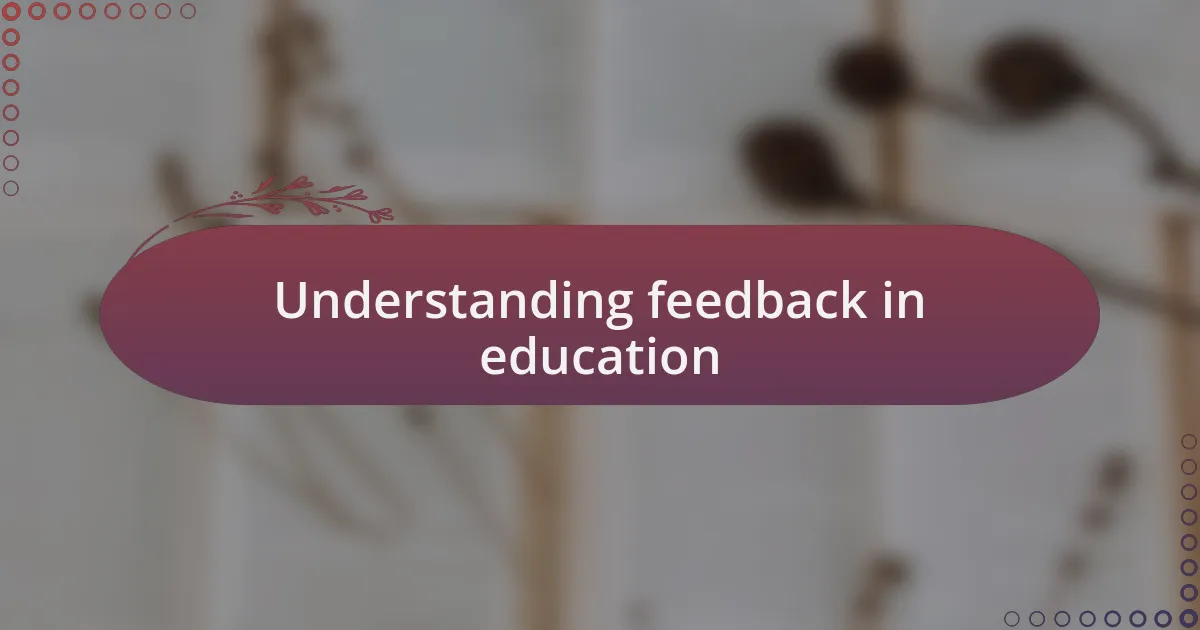
Understanding feedback in education
Understanding feedback in education is essential for student growth. I remember when I received constructive criticism on my writing early in my academic journey. Initially, it stung a little—who enjoys hearing their work needs improvement? However, I quickly learned that this feedback was a powerful tool for honing my skills.
Feedback isn’t just about pointing out what’s wrong; it’s about illuminating the path to improvement. Have you ever thought about how feedback can reshape your understanding of a subject? I recall a pivotal moment in high school when feedback from my math teacher helped me grasp a complex concept. It wasn’t just the notes he provided; it was the engaging conversation we had that made the difference. That interaction changed how I approached challenges in math—turning anxiety into excitement.
Now, consider this: how often do we truly reflect on the feedback we receive? Sometimes, it feels overwhelming, like trying to decode a secret message. Personally, I’ve found that taking a moment to digest feedback allows me to connect more deeply with the material. In my experience, it’s the conversations around feedback that foster a collaborative environment, where educators and students can work together toward shared goals.
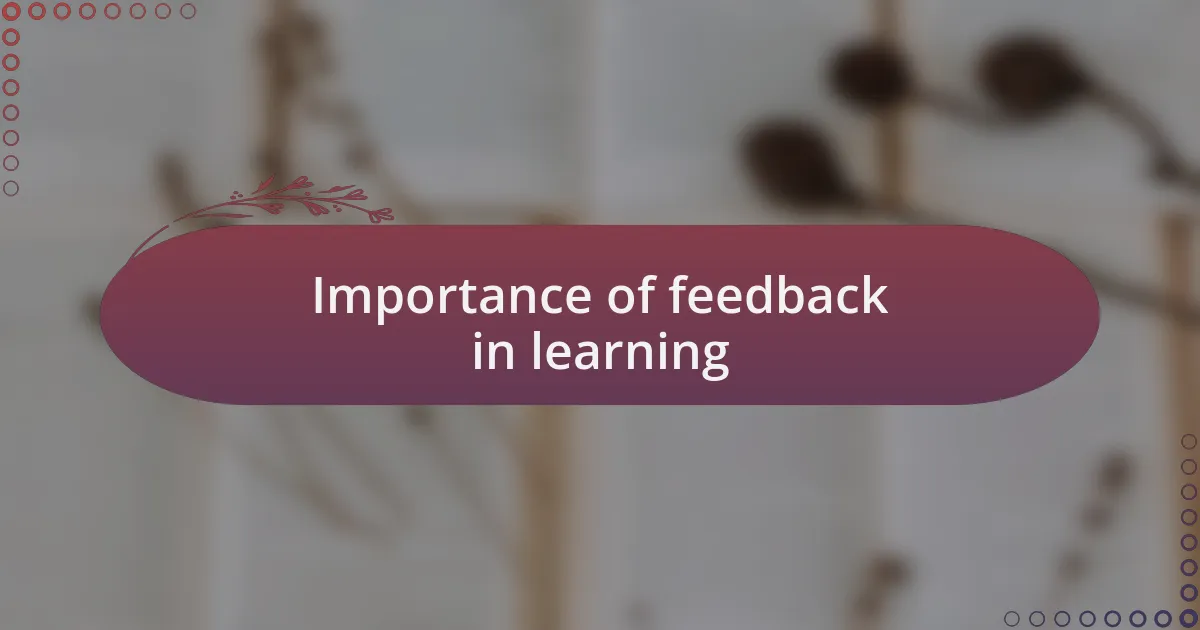
Importance of feedback in learning
Feedback plays a crucial role in the learning process, acting as a mirror that reflects our strengths and areas for growth. I remember a time when a mentor reviewed my project and provided thorough insights. Initially, I felt defensive, but then I realized that each comment was an invitation to think critically and grow—not a personal attack.
It’s fascinating how feedback fuels motivation and resilience. One instance that stands out to me was when I participated in a group presentation. We received pointed feedback, and while it felt daunting at first, it ignited a fire within us to improve and approach our next presentation with new strategies. It taught me that constructive criticism, in a supportive environment, can transform setbacks into stepping stones.
Moreover, how often do we underestimate the power of timely feedback? Early in my career, I had a supervisor who continuously provided constructive input. It wasn’t just helpful; it made me feel valued and respected as a contributor. This nurturing approach not only improved my performance but also fostered a deep sense of belonging in the workplace. That experience reinforces the idea that feedback, when delivered thoughtfully, can enhance both individual and collective learning journeys.
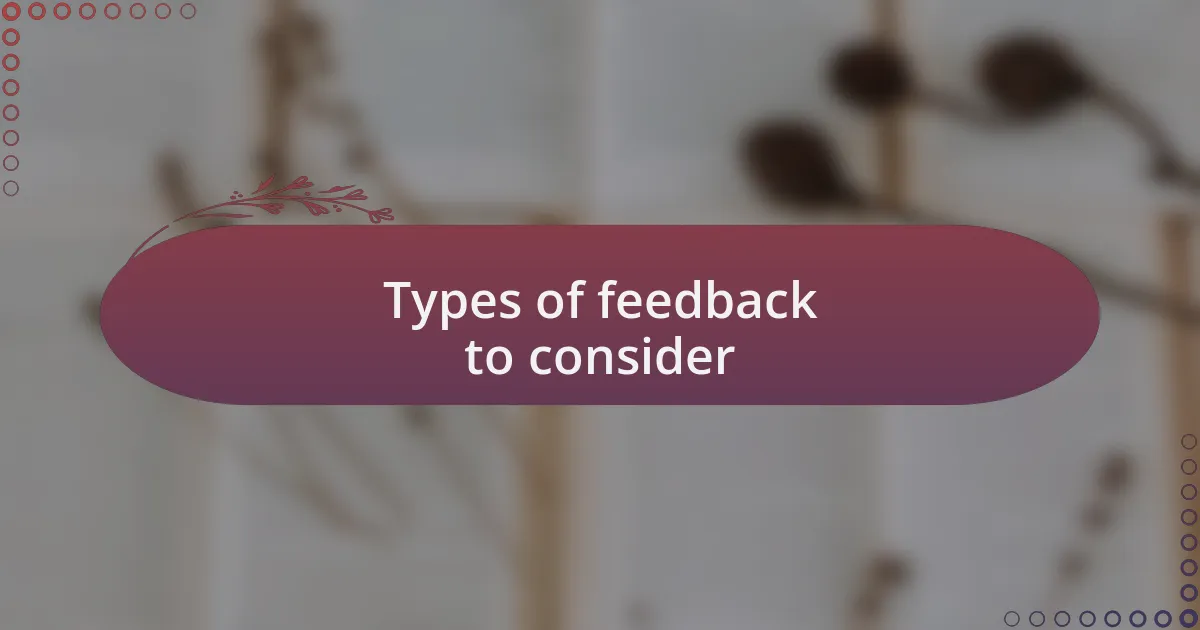
Types of feedback to consider
When considering types of feedback, there’s a significant distinction between formative and summative feedback. Formative feedback is ongoing, often occurring during the learning process, helping to guide improvement. I recall a professor who frequently checked in on my progress during a semester-long project; those small, consistent pointers vastly improved the final outcome. Isn’t it interesting how that level of engagement can reshape our understanding and skills over time?
Another type worth mentioning is peer feedback, which can be incredibly powerful. I once participated in a writing workshop where my peers offered insights on my work. While some comments were tough to digest, they truly opened my eyes to perspectives I hadn’t considered before. Have you ever found that a fresh viewpoint can drastically change your approach? It’s a reminder that learning collaboratively can lead to deeper insights and richer experiences.
Lastly, don’t overlook self-reflection as a form of feedback. I often sit down after completing a project to assess what went well and what I could have done differently. This introspection provides clarity and direction for future endeavors. Have you practiced this? I find that pausing to consider my experiences not only enhances my growth but also instills a sense of ownership over my learning journey.
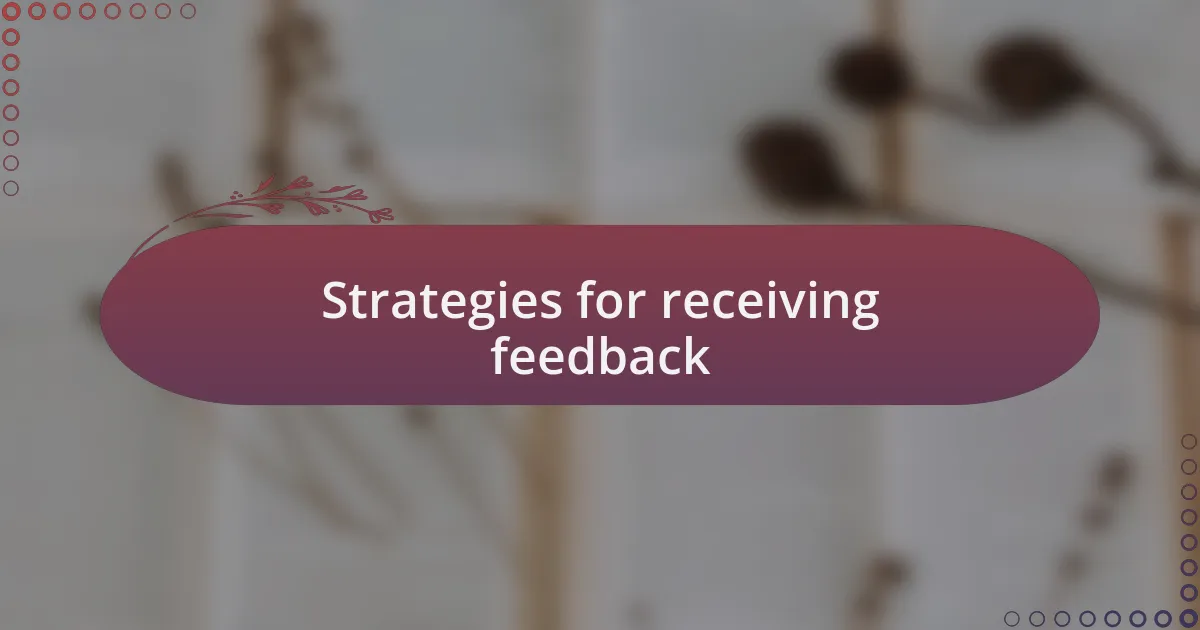
Strategies for receiving feedback
Receiving feedback can be a delicate process, but I’ve learned a few strategies that make it easier. For instance, I always remind myself to approach feedback with an open mind. I think back to a time when I received constructive criticism on a presentation I’d poured my heart into; rather than feeling defensive, I chose to welcome the insights. Have you ever experienced that shift in perspective? It’s liberating to see feedback as a tool for growth rather than a judgment of your abilities.
Another effective strategy is to ask clarifying questions. After receiving feedback, I often find myself wondering about the specifics or the rationale behind the comments. I learned this during a group project when I sought clarification after a peer’s suggestion about my research direction. The dialogue not only refined my understanding but also strengthened our collaboration. Isn’t it fascinating how digging deeper can turn vague feedback into actionable insights?
Lastly, I’ve discovered the importance of timing. I prefer to receive feedback soon after completing a task or project while the details are still fresh. I recall a moment when my mentor gave me input on a paper just days after I submitted it. The feedback was richer and more relevant because we were on the same page. Have you considered how timing impacts the quality and applicability of the feedback you receive? Prioritizing timely discussions can truly enhance the feedback process.
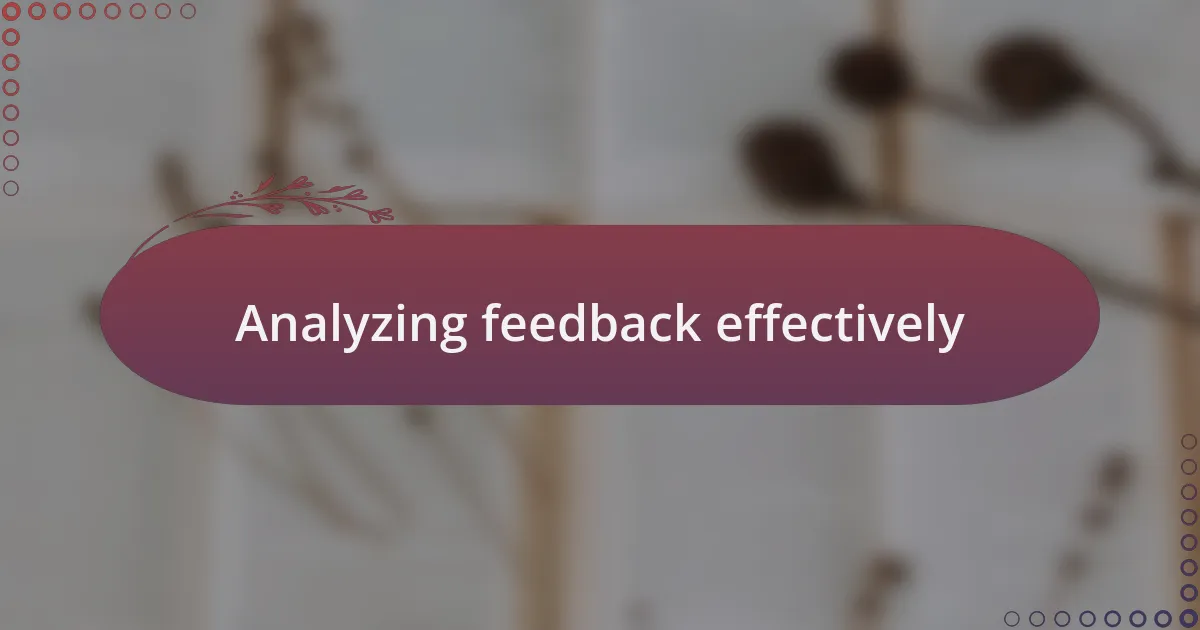
Analyzing feedback effectively
Analyzing feedback is truly an art form that takes practice. I remember a time when I received a lengthy review on an article I had written. Instead of feeling overwhelmed by the sheer volume of comments, I took a systematic approach by categorizing the feedback into strengths and weaknesses. This method helped me pinpoint specific areas to improve while also appreciating the parts of my work that resonated well. Does breaking down feedback in this way resonate with your experience?
What I find especially insightful is the importance of context when analyzing feedback. I once received a mix of feedback from different sources on a project, and at first, I struggled to reconcile their differing perspectives. It was revealing to understand the background of each reviewer; their experiences shaped their views. By considering their contexts, I was able to appreciate their suggestions more fully and even integrate diverse ideas. Have you ever thought about how the perspectives of those giving feedback can influence its value?
One of my favorite techniques for analyzing feedback effectively is the “pause and reflect” method. After receiving input on my teaching methods, I took some time away from it to let it sink in. This reflective pause allowed me to sift through my emotions, separating my initial feelings of defensiveness from the constructive points offered. I encourage you to try this – it often leads to deeper insights and can turn initial discomfort into tangible action steps. How do you process feedback when it feels too personal?
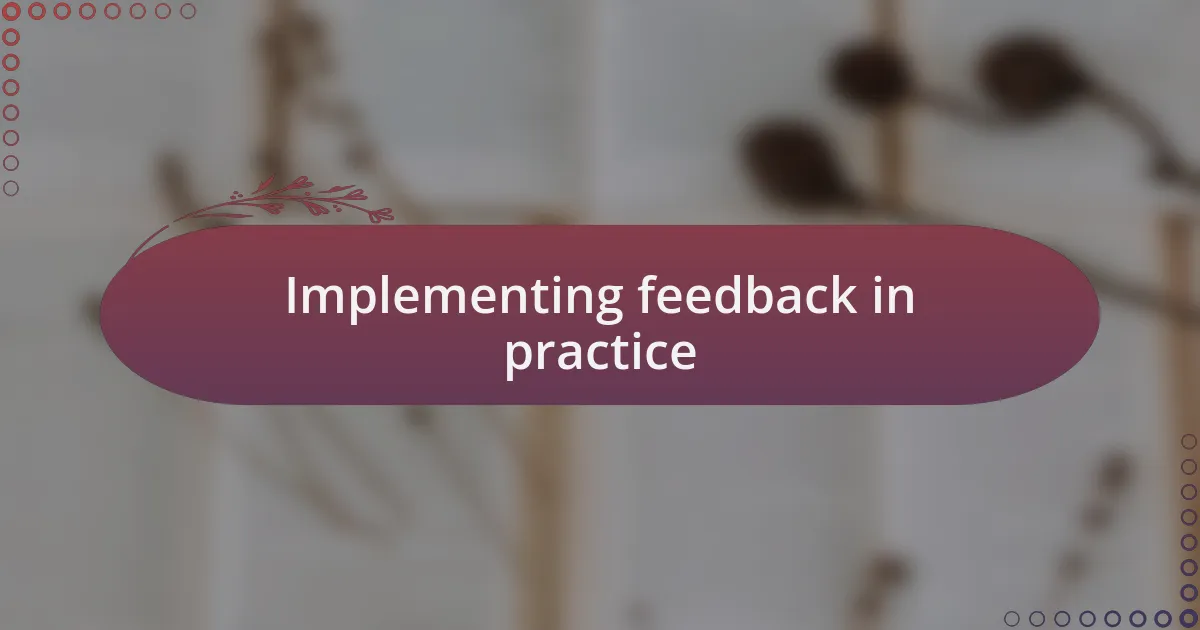
Implementing feedback in practice
Implementing feedback in practice is where the real growth happens. I vividly remember transforming a series of classroom evaluations into actionable steps. Firstly, I selected one or two areas I believed needed the most attention, and then I developed a focused action plan. This approach turned what felt like overwhelming criticism into a manageable roadmap for improvement. Have you ever felt the weight of feedback shift when you gave it a clear purpose?
Another strategy I found effective is to involve peers in the implementation process. After receiving feedback on a project I was passionate about, I organized a small brainstorming session with colleagues. By discussing their interpretations of the feedback alongside my own, I uncovered new ideas that I hadn’t considered. This collaboration fostered a sense of community and accountability, which significantly enhanced my output. Have you considered how teamwork can enrich your response to feedback?
One practical application that I can’t emphasize enough is the importance of tracking progress related to the feedback received. I’ve kept a dedicated journal where I note how I have applied different pieces of feedback and the outcomes. It’s satisfying to look back and see tangible improvements over time, reinforcing the idea that feedback is not just a momentary response but an ongoing conversation. How does tracking your progress help you stay connected to the feedback you’ve received?
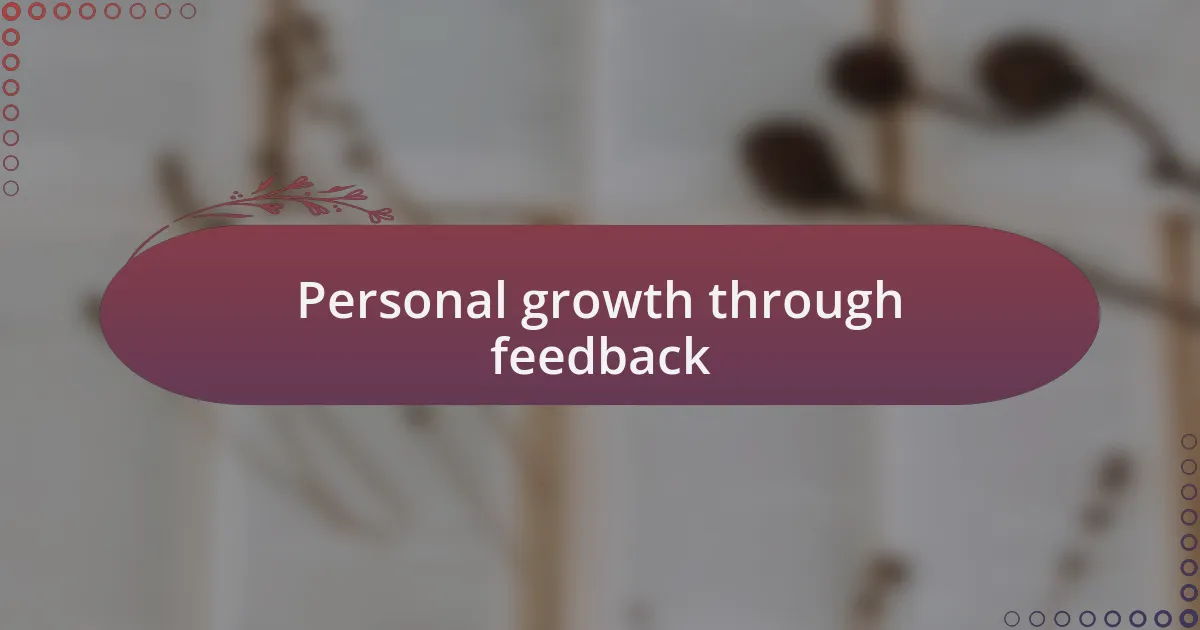
Personal growth through feedback
Feedback has the incredible power to prompt personal growth in ways we might not initially recognize. I recall a time when I received constructive criticism on my teaching style. Instead of feeling discouraged, I embraced it as an opportunity to refine my approach. What if we shifted our mindset to see feedback as a tool for empowerment rather than a source of anxiety?
Embracing feedback has also led me to discover new strengths within myself. For instance, after a presentation, I received feedback suggesting I engage the audience more effectively. I took that advice to heart and experimented with interactive techniques, which not only improved my engagement but also boosted my confidence. Have you ever tried to push your boundaries based on someone else’s insights?
Reflecting on feedback often reveals deeper layers of understanding and motivation. I once engaged in a reflective exercise after receiving multiple suggestions to improve my written communication. As I explored these insights, I uncovered a passion for storytelling that had been buried under a layer of self-doubt. How often do we find that feedback unlocks aspects of ourselves we didn’t even know existed?